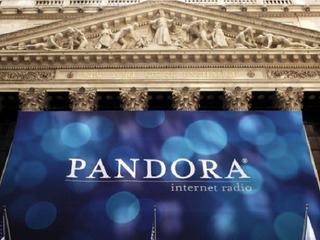

Pandora is learning a new dance, and it is called the executive shuffle.
The music streaming service announced on Tuesday that it is losing one of its longest serving members: Tom Conrad, who has been chief technology officer and Executive Vice President of Product at the company for the past 10 years.
As a result of the move, Chris Martin, Pandora’s VP of Engineering, has been promoted to the CTO role, and will join the executive leadership team representing the company’s engineering efforts. Steve Ginsberg, Pandora’s VP of Technical Operations, is also getting a promotion. He will be the company’s Chief Information Officer. He and his team will report to CFO Mike Herring.
In addition, Pandora also announced that it is creating a new, yet unfilled role, at the company: Chief Product Officer, who will report to CEO Brian McAndrews.
In his role at Pandora, Conrad was responsible for the company’s engineering and product organization, which he had led from the product’s inception. He is expected to continue working full-time at the company for the next three months. After that, he will transition to a part-time role advising the Company’s leadership team.
In a separate blog post, Conrad explained his reasons for leaving the company, saying that it would have happened sooner if not for the announcement last March that longtime CEO Joe Kennedy would be stepping down.
“The story of Pandora has had many chapters and through most of the twists and turns, I was solely focused on how I could help get the company to the next stage. Rarely did I stop to think about a world where I didn’t make my contribution to the next chapter,” said Conrad in an email to the Pandora team.
“I confess though that maybe 18 months ago, I started to think about what I’d need to do to hand over the pen so others could author chapters after my eventual departure.”
Once Kennedy made his announcement, though, Conrad says that he delayed his own plans until the company found its new CEO and had stabilized.
“My focus for the last twelve months has been to ensure that the company landed confidently in the hands of an exceptional new leader,” he wrote.
In September the company finally got it’s new CEO: Madrona partner Brian McAndrews. With that new leadership in place for the last six months or so, Conrad said that he finally felt confident that he is leaving the company in good hands.
“As I look at the revitalized executive leadership team he has put in place, consider the great leaders on my own team, and contemplate the exciting roadmap we’ve set for the future, I’ve decided that all the pieces are in place to allow me to step aside and let others write the next chapters,” he said.
Pandora’s reported $600.2 million in full year revenue for 2013, a 54% year-over-year increase. It’s total listener hours grew 23% to 16.70 billion, compared to 13.51 billion in 2012.
Pandora’s stock is currently down 0.48%, or 17 cents, to $34.94 a share.
(Image source: hanleymade.com)


















